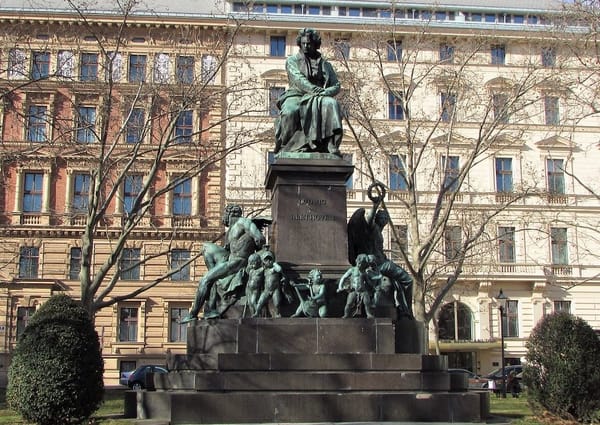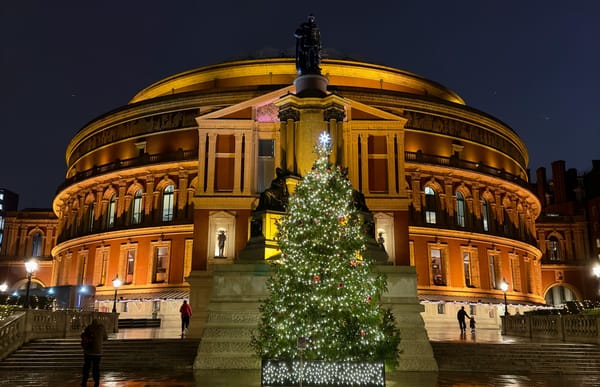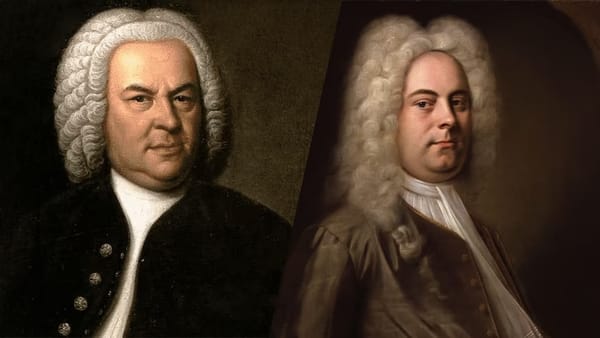Deep Dive into Chopin’s Nocturnes: Romantic Piano Masterpieces
Chopin’s Nocturnes revolutionised the piano repertoire, blending haunting melodies with daring harmonies. From the intimate Op. 9 pair to the grand Op. 48 in C minor, these miniatures illuminate Romantic expression in miniature form, nuance and virtuosity.

Frédéric Chopin’s Nocturnes stand as some of the most intimate and expressive works in the piano repertoire. Composed between 1827 and 1846, these pieces chart the composer’s evolution from a gifted young pianist to a mature artist whose innovative harmonic language and pianistic textures would come to define Romanticism. In this article, we will explore the origins of the nocturne genre, examine Chopin’s unique contributions, delve into the formal and harmonic characteristics of selected studies, and consider interpretative issues that performers commonly face.
The Nocturne before Chopin
The term “nocturne” was first popularised by the Irish composer John Field, whose charming piano pieces of the 1810s and 1820s painted delicate, moonlit scenes. Field’s nocturnes typically consist of a singing melody in the right hand set above simple, arpeggiated accompaniment in the left. Their serene atmosphere and straightforward harmonies made them highly appealing to both amateur and professional pianists. Yet, for all their beauty, Field’s works remained relatively conservative in their formal design and harmonic palette.
Chopin admired Field’s concept of an evocative, nocturnal piano piece, but he aspired to greater depth and sophistication. From his very first nocturnes, published as Op. 9 in 1832, one senses a composer determined to expand the expressive possibilities of the form.
Chopin’s Innovations
Harmonic Boldness
Perhaps the most striking feature of Chopin’s nocturnes is their adventurous harmony. Where Field might linger in diatonic territory, Chopin frequently employs chromatic mediants, enharmonic modulations and bold Neapolitan and German augmented-sixth chords. These surprises create intense emotional colour and momentary instability, conveying longing and introspection.
In the Nocturne in B major, Op. 32 No. 1, for instance, the opening theme’s tranquillity is punctuated by an unexpected shift to G minor in bar 5, achieved through an enharmonic reinterpretation of an E‑flat seventh chord. Such seamless yet startling turns are emblematic of Chopin’s harmonic imagination.
Melodic Freedom and Rubato
Chopin’s melodies possess a natural flexibility that invites expressive rubato (the subtle stretching or compressing of tempo). He often writes cascades of ornamentation – appoggiaturas, turns and intricate filigree – that embellish a basic song-like line. The result is a vocal quality that echoes the bel canto of Rossini or Bellini.
But Chopin never prescribes exactly how much rubato should be applied; he leaves the decision to the performer’s taste and emotional instincts. Accordingly, his nocturnes have become vehicles for pianists to forge personal statements.
Textural Refinement
While Field’s nocturnes tend to feature a clear melody-plus-accompaniment texture, Chopin broadens the palette. In many nocturnes, the left hand undertakes more than merely rolling chords; it may introduce counter-melodies, harmonic pedal points or delicate inner voices. Chopin also experiments with sparse textures: moments of near-silence that heighten the effect when the main theme returns.
Take the Nocturne in C minor, Op. 48 No. 1. After a grand, declamatory opening, the music subsides into hushed repeats of a simple three‑note figure in the bass, over which the right hand floats a chorale-like melody. This contrast between grandeur and intimacy, between fullness and austerity, reveals Chopin’s mastery of pacing and mood.
Formal Structures
Although Chopin’s nocturnes are generally concise—few exceed five minutes in performance—they display a variety of formal schemes. The most common is a ternary (ABA) form:
- A section introduces a lyrical theme, often with decorative figuration.
- B section provides contrast—either through a change of key, mood or texture—and may develop material from A or present new ideas.
- A′ section returns to the opening theme, sometimes varied or embellished, bringing the piece full circle.
Yet Chopin never confines himself rigidly to these outlines. In the Nocturne in D‑flat major, Op. 27 No. 2, the central section, in E major, extends into an almost rhapsodic fantasia, before the music drifts back to the tranquillity of D‑flat major. Likewise, the Nocturne in F‑sharp major, Op. 15 No. 2, employs a motto-like figure—an oft‑repeated rhythmic cell—that unifies its three large sections.
Spotlight on Selected Nocturnes
Nocturne in B‑flat minor, Op. 9 No. 1
Composed in 1830–31, this early nocturne already displays Chopin’s characteristic integration of melody and harmony. Its solemn opening theme is cast in B‑flat minor, a key of introspection, and includes chromatic grace notes that intensify the yearning quality. The middle section modulates to D‑flat major, providing a moment of warmth and hope, but the return of the opening theme brings back the nocturnal calm tinged with melancholy.
Nocturne in C minor, Op. 48 No. 1
Written in 1841, this piece marks a move towards grander, more dramatic nocturnes. Its opening bars—fortissimo, with sweeping left‑hand chords—contrast sharply with Chopin’s earlier, gentler style. The subsequent chorale-like section demands both technical control and emotional depth from the performer. Some critics of the day found the grandeur too operatic for a nocturne; today, it is celebrated for its epic scope within a “miniature” form.
Nocturne in D‑flat major, Op. 27 No. 2
Published in 1836, the second of the Op. 27 pair is often cited as one of Chopin’s most sublimely beautiful creations. Its melody floats above a richly arpeggiated accompaniment, and the lengthy middle section explores distant keys with imaginative modulations. The final return of the opening theme is more ornate than before, as if gilded by the journey taken in the B section.
Nocturne in F‑minor, Op. 55 No. 1
Among Chopin’s late nocturnes, Op. 55 Nos. 1 and 2 (both composed in 1843) embrace a simpler, more subdued manner. The F‑minor nocturne opens with a fragile, sighing motif that recurs like a whispered secret. There is none of the grand drama found in Op. 48; instead, Chopin offers introspection in its purest form, leaving spaces of silence that invite the listener’s contemplation.
Interpretative Considerations
Tempo and Rubato
Chopin seldom indicates exact metronome markings. Instead, he writes expressive terms such as “Lento” or “Andante sostenuto.” Performers must therefore choose tempos that balance forward momentum with the music’s reflective nature. Too slow, and the piece may lose structure; too fast, and its poetic intimacy is compromised.
Rubato is central to Chopin’s style, but it should never be so extreme that the accompaniment stalls while the melody lingers. A balanced approach—where the right hand breathes freely against a steady left-hand pulse—ensures coherence and elegance.
Pedalling
Chopin’s pedalling indications are often sparse. While the sustain pedal is essential to achieve the resonant sonority of the nocturnes, excessive use can blur inner voices and muddy harmony. Modern pianos also have greater resonance than those of Chopin’s era, so pianists frequently adopt a lighter, more judicious pedalling technique—changing pedal on harmonical shifts and briefly lifting to clear unwanted overtones.
Ornamentation
Chopin writes elaborate ornamentation, but he often leaves performers to decide how to shape trills, appoggiaturas and cadenzas. In the Op. 9 nocturnes, the embellishments are integral; in later works, performers sometimes add non‑written embellishments in repeats or cadential passages, drawing on historical practice. A thorough understanding of early‑nineteenth‑century ornamentation treatises can inform tasteful choices.
Chopin’s Nocturnes in Context
Chopin’s nocturnes influenced generations of composers: Gabriel Fauré, Claude Debussy and Maurice Ravel, among others, adopted and adapted the nocturne genre, infusing it with their own harmonic and textural innovations. Yet none surpassed Chopin in the purity of expression and the seamless blend of form, melody and harmony.
On a broader level, Chopin’s nocturnes epitomise Romantic ideals: the elevation of personal emotion, the transfiguration of ordinary moments into profound experience, and the valorisation of individual expression. Though ostensibly simple, these miniatures invite deep reflection and reward repeated hearings.
Conclusion
Chopin’s nocturnes remain enduring favourites among pianists and audiences alike because they marry songful melodies with daring harmonic invention, all within a compact form. Their expressive range—from hushed whispers to impassioned declarations—captures the Romantic spirit in miniature. For performers, they offer a mirror for self‑expression; for listeners, a window into the composer’s soul.





